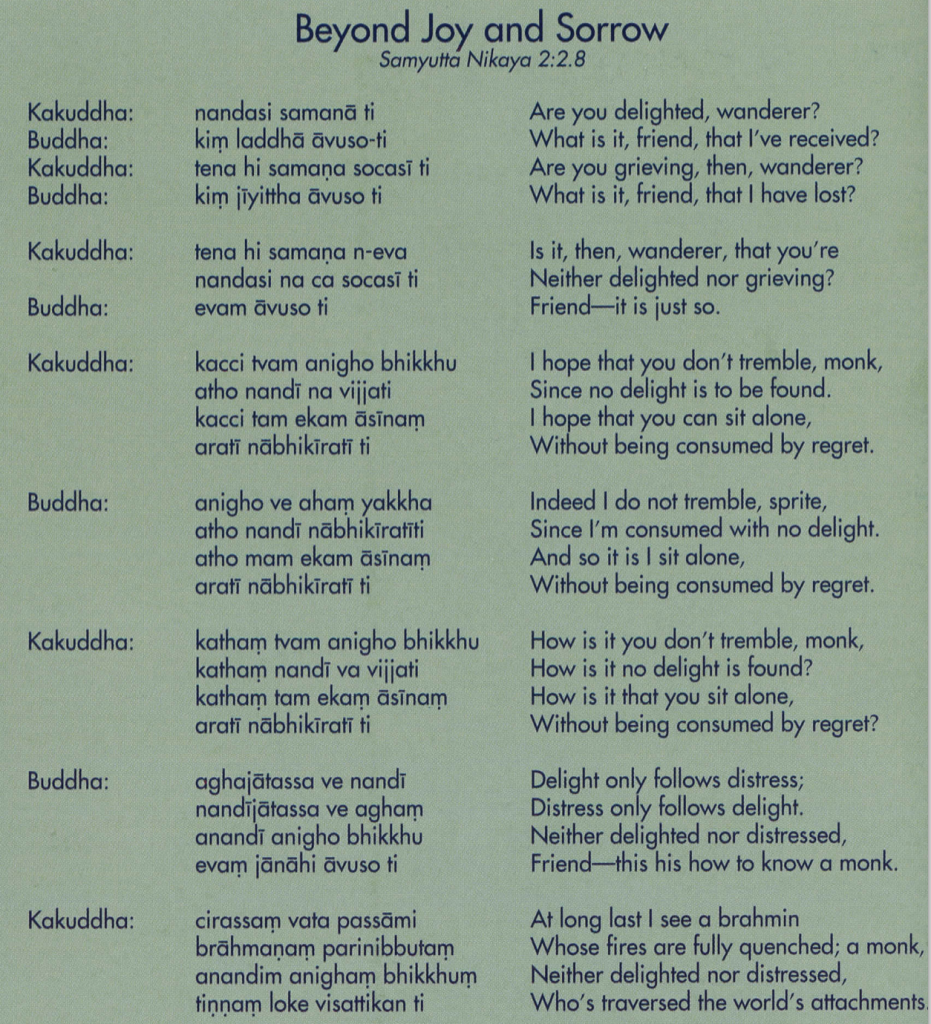These bantering verses, exchanged between the Buddha and Kakuddha, the “son of a deva” or a forest sprite, are replete with subtlety, word play and double meaning. Notice the matching structure of the verses, a very common device of early Buddhist poetry. The fourth stanza mirrors the third, line by line, and the theme is echoed again in the fifth stanza. The Buddha follows the poetic lead of the sprite, but reverses the meaning of his words. Kakuddha assumes delight (nandi) to be the requisite of happiness, while the Buddha identifies the same delight as the cause of unhappiness. This is because delight refers not to pleasant feeling but to an intentional response—the savoring of pleasant feeling, which is doomed to pass away and be replaced by distress (agha).
The Buddha instead describes a state of equanimity, beyond joy and sorrow, that allows for the full experience of pleasure and pain without the attachment and resistance that normally accompanies them. The deepest possible state of well-being ensues when the fires of both delighting in and being distressed by experience are quenched. The word for this is nibbuto, another form of the word nirvana.

